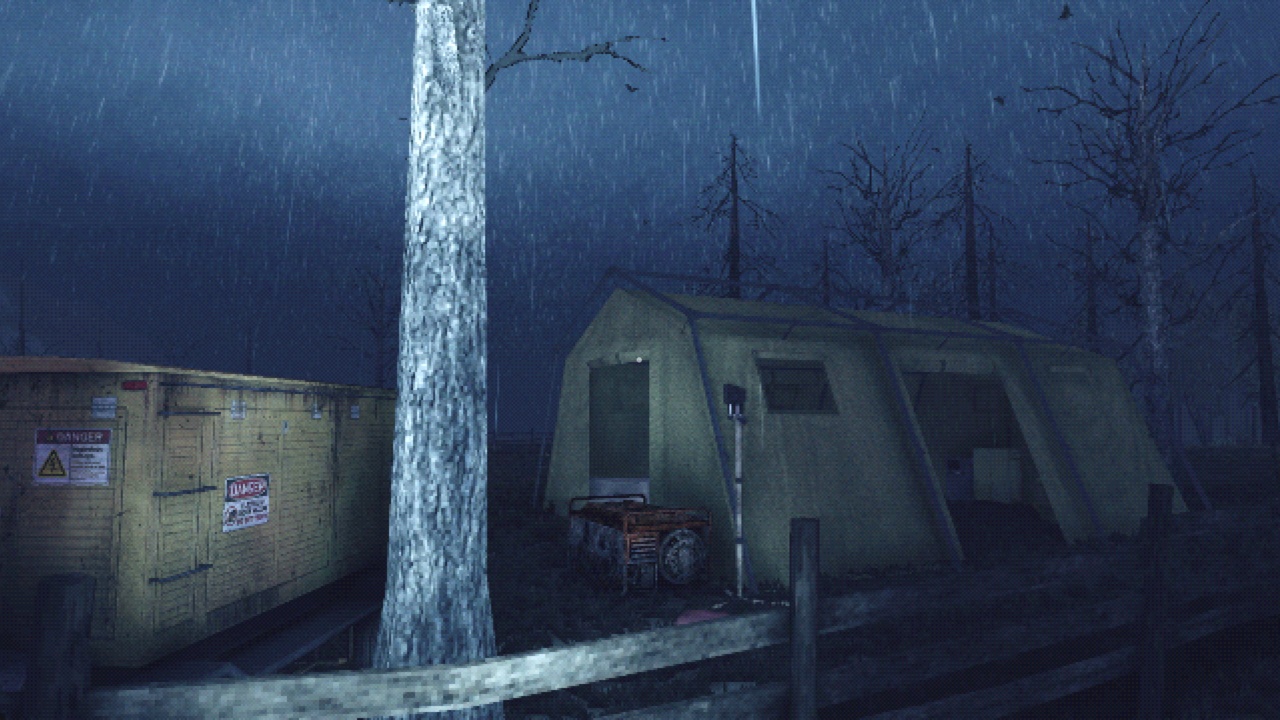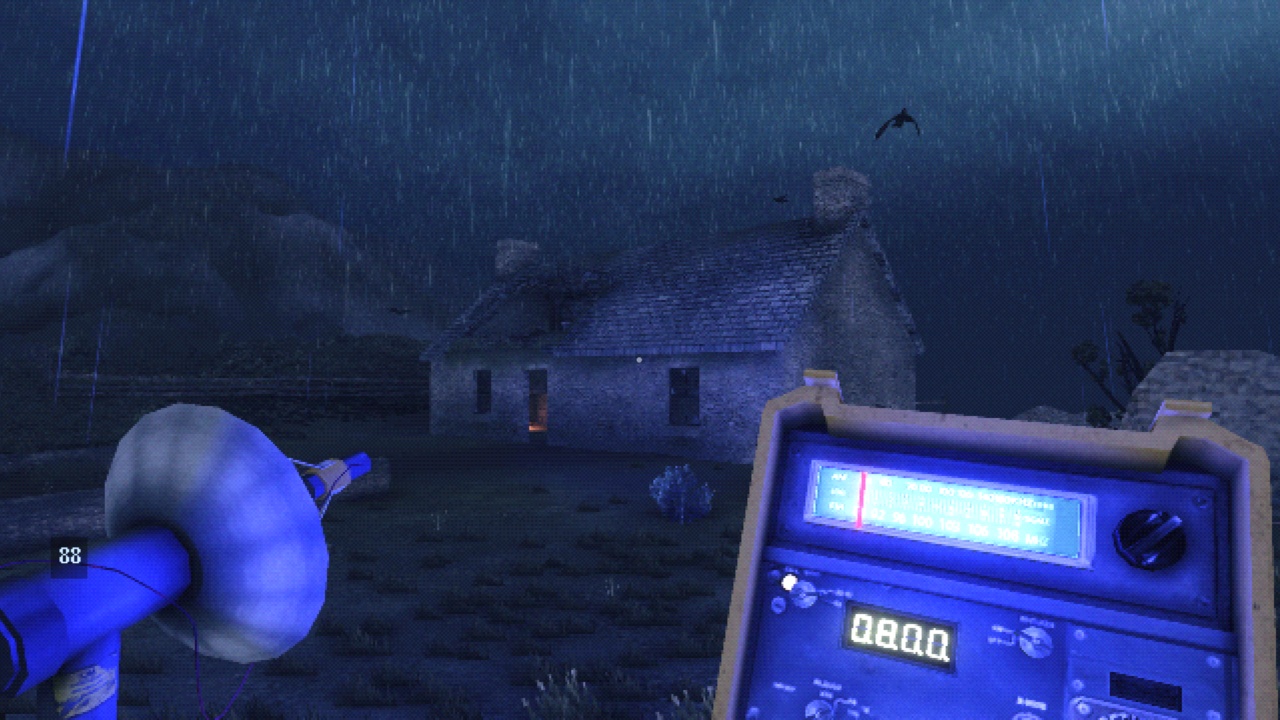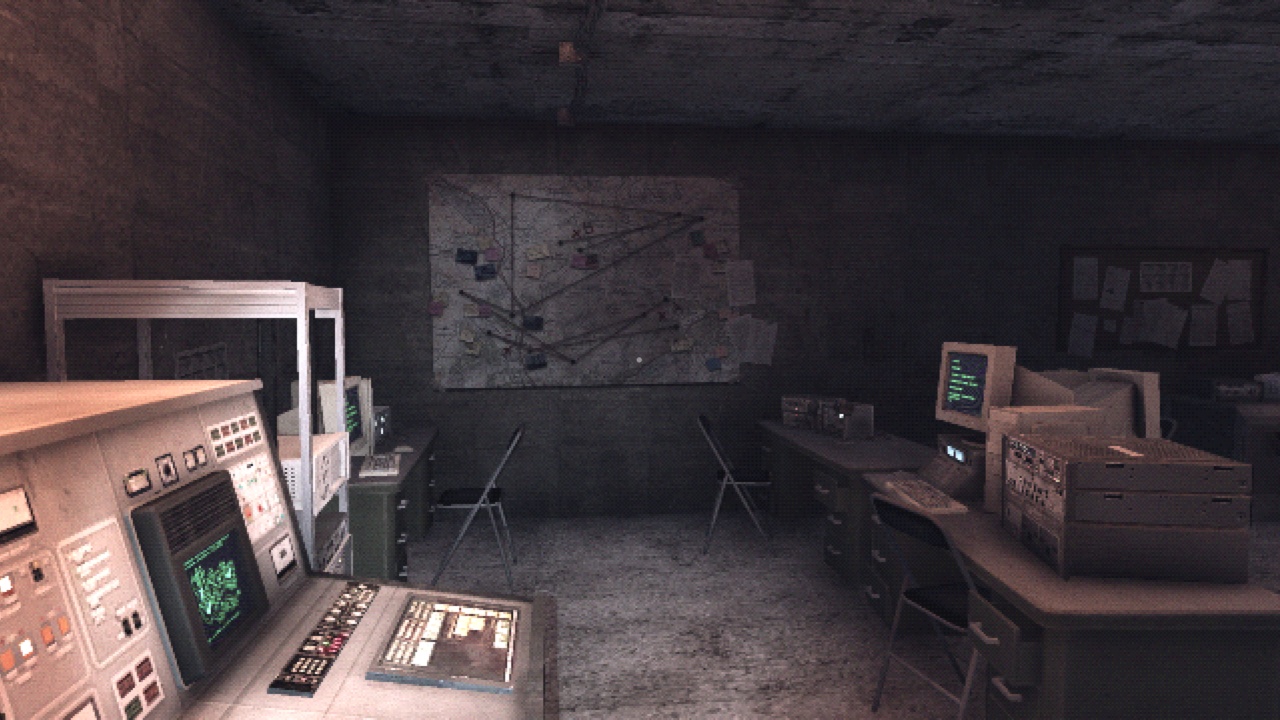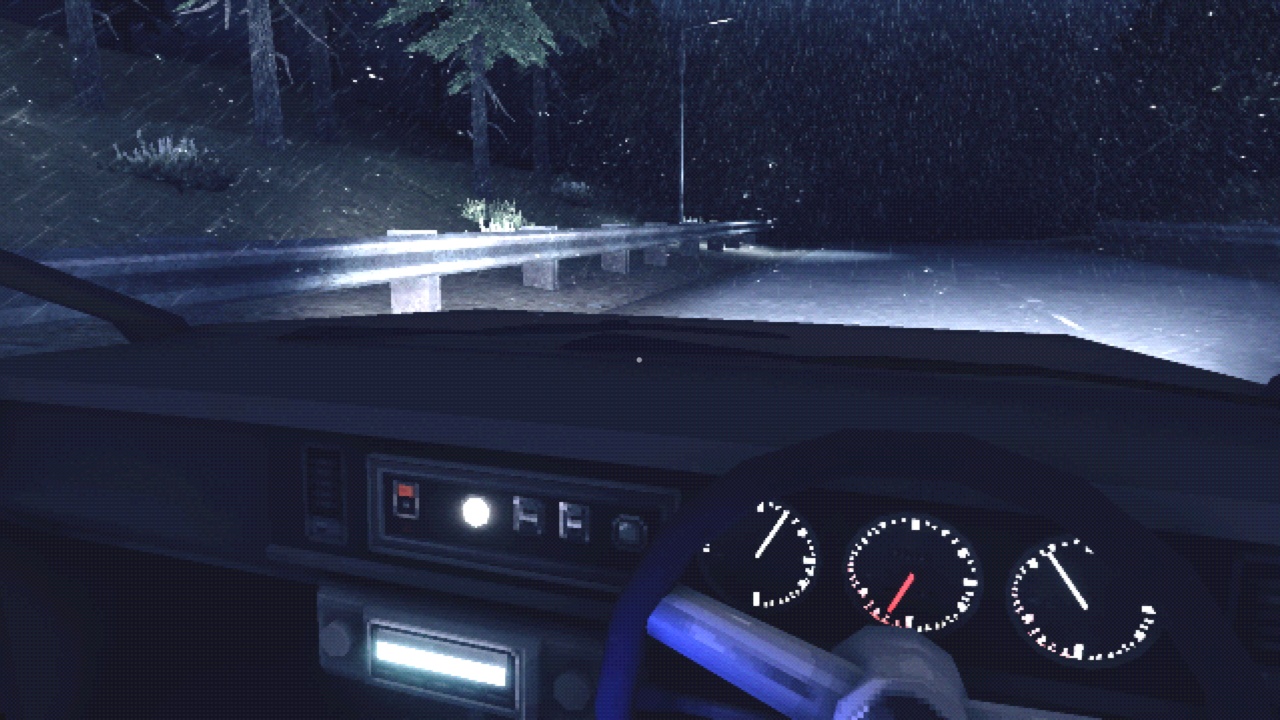Like an obscure find on the discount horror rack at Blockbuster.
Chasing Static is a short horror story with an early 2000s low-budget movie feel. Taking place in the rural parts of Wales, you play as a man named Chris Selwood who, during his travels, discovers a small town with big secrets.
The game opens with Chris driving through a thunderstorm when he decides to pull over into a small cafe to wait out the weather.

Inside, he meets the only person working there, a young waitress whom he asks about his destination. The woman tells him he missed a turn, but not to worry because she was heading there after her shift and would show him the way. While she finishes closing down the cafe, Chris waits for her.
After a couple minutes of being able to explore the cafe and talk to the waitress, the power goes out. The waitress says this happens all the time, and asks Chris to fix the fuse box, which is in the backrooms of the cafe. This is the game’s first puzzle, and you have to find the right fuses and put them back in the right spot. After you complete this, Chris walks back to the main seating area only for the lights to go out again. Worse, the waitress is being held by a dark figure with glowing eyes. Chris passes out from shock and wakes up alone in the cafe. This starts the actual gameplay, as Chris then sets out to explore the area around him.

Chasing Static has a first-person point-of-view and very basic controls for exploring. You start this in a wooded area in which you’ll find a secret, underground research facility with only one scientist left. You communicate with her through a radio, and she explains how you are in danger of an energy field that can take control of someone’s mind. Thankfully, she also knows how you can help fix it. She tells you there are three locations in which you can find containment equipment to use to stop the energy field: the cafe shop, the village near it, and the open moors, also nearby.
The rest of the game follows you playing as Chris to retrieve this equipment to help save the research facility and the areas surrounding it. Chris finds a Frequency Displacement Monitoring Device to help aid him on his journey. The FDMD is a technology that helps to find echos around the areas, which are visions that help solve puzzles to find the equipment you need. They help you to uncover the story of what happened to the research facility and why what’s happening is happening.

The early 2000s visuals of Chasing Static are certainly dated, but in a charming way that helps add to the game’s overall uneasiness. The entire game is played mostly outside in the dark, and due to the situation of maybe losing your mind, the game has a very creepy vibe. The music helps add to this as well, as well as the anonymity of the antagonist in the game. Because the story is unveiled little by little, it allows the game to remain scary as you aren’t 100% sure what is going on. Even once you start to get an idea, there is no real answer to whether it is real.
While playing I found no interface troubles, but I did find myself getting lost a couple of times, or confused on what to do next. This is the game’s main problem, as the locations are too large for the scant tasks you need to complete in them. There’s too much time and distance between puzzles and events, causing you (and, therefore, the game) to meander. Perhaps this is a good thing, as Chasing Static can still be completed in only a few hours. It can very much be experienced in one evening like a creepy horror movie.

In fact, Chasing Static’s old-style visuals and gameplay really cause it to feel like you’re watching a good psychological horror from your parents’ boxed up DVDs. It’s a short play, but definitely a fun one. The graphics and storyline are actually pretty cool, the voice acting is well done, and the game does a good job at being scary, even past the jump scares.
Review: Chasing Static (Nintendo Switch)
Good
Chasing Static is a psychological horror game in which you play a character who stumbles upon a failed research facility. These always mean trouble, this time caused by a surrounding energy field that can make a person slowly lose their mind. Recovering the equipment to fix the field and discovering what happened won’t take the player more than a few hours, but it’s a mostly fun, constantly creepy time while it lasts.


